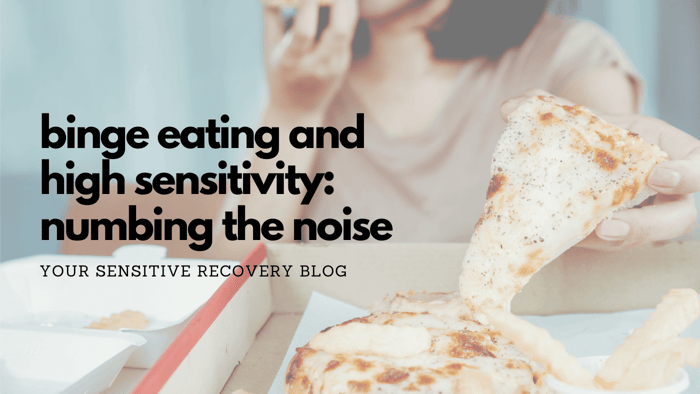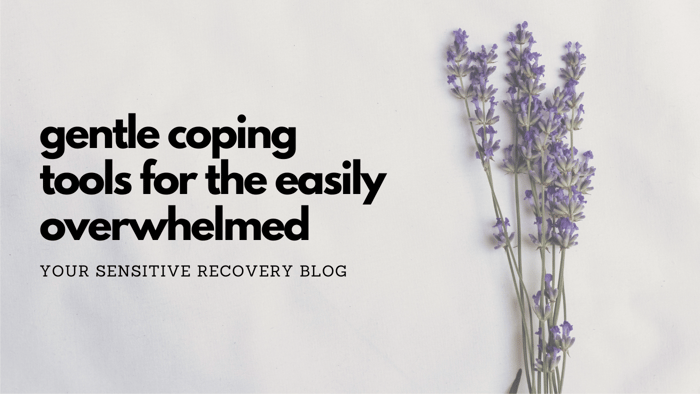If you've been using food as your go-to coping mechanism, trying to break the cycle can feel frustratingly futile. Healing disordered eating isn’t as simple as just eliminating harmful behaviors; It requires finding healthier ways to cope with the challenging emotions and compelling thoughts that fuel them.
This post walks you through what you need to know about learning to cope without turning toward or away from food. Plus, get your hands on a free resource I created just for you. Your Ultimate Coping Toolbox for ED Recovery is designed to guide you in choosing the right coping tools at the right time.
Types of Coping Tools
Almost any action can become a coping tool. Healthy or not, you likely have several tools already at your fingertips. When it comes to healthy, effective coping tools, there are many different types: tools for grounding and getting present, self-care tools, tools designed to shift your perspective, and more.
One of the most common categories of tools people is actually distraction. While some people look down upon distraction as a means of coping, it IS a legitimate tool! What's important, however, is that it's not the only type of tool in your toolbox.
What types of tools do you use? Do you feel like you have enough to choose from?
Trial & Error: Progress, Not Perfection
Taking a gradual approach to incorporating new tools is vital. Stopping disordered behaviors cold-turkey can lead to an increasing sense of overwhelm, intensifying urges, and sometimes a violent resurgence of the behaviors. Slow and steady wins the race here.
It's helpful to know ahead of time that more often than not, a new coping tool is NOT going to immediately bring you the same relief as whatever you've been doing with food.
It's important that you practice a new coping tool a handful of times, in different situations, before deciding that it "doesn't work" for you.It's just like building new muscle. It takes repetition to get anywhere. When you first started turning to binge eating or restricting, for example, it solidified itself as a coping mechanism by you engaging in it repeatedly.
3 Steps to Testing New Tools
My work with clients has shown me that practicing new coping tools works best when they're introduced slowly, and with less pressure for them to work perfectly. When you're first trying out new tools and skills, you want to practice them while still giving yourself the option to engage in the disordered behavior afterward, if it's still desired and needed. That may sound counterintuitive, but without this option, your psyche will be much more resistant to trying the new tools.
Here are 3 steps you can follow to begin testing out new ways to cope:
- Awareness: First and foremost, begin building awareness around what happens right before you have an urge to cope with food. Most commonly, an urge is triggered by a combination of a difficult emotion and a thought. Let's say you have a habit of compulsive eating after work to help you calm down after a stressful day. You notice that you feel overstimulated and have the thought, "I can't deal with this." Rate the strength of your urge from 1-10.
- Alternative Action: Once you recognize the emotion-thought trigger you're dealing with and how strong your urge for a disordered behavior is, choose a new tool/behavior that fits the situation. Continuing our example, say you'd like to try introducing a self-care tool like a hot shower after work instead of mindless snacking. Commit to practicing this new tool for at least a handful of days after you get home from work.
- Ability to Choose: After each time you engage in your new alternate action (the hot shower), re-rate the strength of your urge to turn to food. If the urge remains high and feels unmanageable, give yourself permission to then choose food. The success is that you practiced an alternative coping, not necessarily that it immediately worked.
As you build your repertoire of coping skills and get some practice time under your belt, you can lengthen the time you commit to spending engaging in the healthier, alternative actions before choosing your disordered action. You may even start stacking healthy tools to extend that time. You will come to find that urges do decrease over time.
Building Your Coping Toolbox
Understanding the different types of coping tools and which are likely to work best when is key to a sustainable recovery. Practicing new tools several times and having multiple types of tools available will boost your resiliency and ability to deal not only with urges but also with life.
Ready to cope more effectively? Want clarity about which tools to use and when? Click the image below to get Your Ultimate Coping Toolbox for FREE!
Go on, you coping master 🙌
✨ Josie Munroe, LMFT is a licensed therapist and owner of JosieMunroe.com and Your Sensitive Recovery. As a recovered clinician and Highly Sensitive Person, she loves supporting others on their journeys to form new, empowered relationships with food, their bodies, and their sensitivity. Join the newsletter for a weekly boost of hope and inspiration. You deserve a recovery that works for you! ✨






